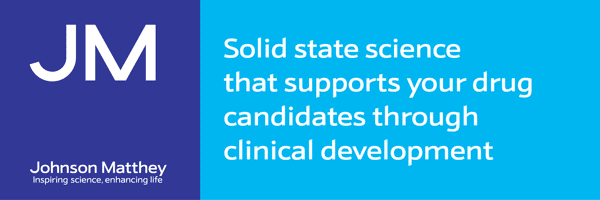
Mike Blake, Director at Willis Towers Watson, a global company that designs and delivers solutions that manage risk and optimize benefits, explores how key decision makers in the specialty chemicals sector can help cultivate a culture of health and wellbeing in their workplaces.
The chemicals sector has one of the highest rates of occupational diseases. As a high-risk industry, it is only natural for companies to focus on improving health and safety in the workplace, and health surveillance of the workforce.
Indeed, the UK’s Health & Safety Executive (HSE) suggests that the chemicals industry needs to better understand the issues that lead to high reported rates of occupational disease and commit to tackling and preventing exposure. Although health and safety should, quite rightly, be an immediate priority, it is important that companies are aware of how health and safety fits into the wider wellness conversation.
For example, “unseen” occupational risks, such as mental health issues and stress, may be overlooked, despite accounting for the highest number of long-term sickness absences in the UK.1 By taking a proactive, comprehensive and holistic approach to health and wellbeing, companies in the chemicals’ industry can not only help strengthen the wellbeing of the workforce by identifying and anticipating trends, but also ease the financial implications of stress-related absences, and cement the employer’s position as an attractive choice within a highly-specialized industry.
Let’s start at the beginning
Interest in health and productivity is nearly universal. In Willis Towers Watson’s 2015/2016 Global Staying@Work Survey, nearly 90% of respondents said that improving workforce health and productivity is a core component of their organization’s overall health strategy. They believe these programs will reduce their employees’ health risks and improve their overall health and well-being, which, in turn, will lead to better business outcomes.
But the stumbling block for many companies is delivery. Despite good intentions, 56% of employers have no health and productivity strategy, and instead simply offer various health and wellbeing programs. Employers who understand their own employee population health risks and their underlying causes are likely to have greater success forging a holistic health and productivity strategy than employers that take a scattershot approach by offering individual, disconnected programmes.
And employers recognise the benefit of this joined-up, strategic approach to health and wellbeing. In the Staying@Work Survey, nearly two thirds of employers said that building an organizational culture of health will be their primary strategy for promoting healthy employee behaviours by 2018. This means considering every aspect of the workplace, from safety, to the food offered in the cafeteria and snack machines, to workplace stress.
A spotlight on mental health
Considering the nature of the specialty chemicals industry, it is understandable that physical health and safety takes precedence when it comes to the subject of worker wellbeing. But the impact of stress and poor mental health on an organization should not be underestimated.
According to Chartered Institute of Personnel & Development’s (CIPD’s) Absence Management Survey 2016, stress is now the most common cause of long-term absence. More than half of organizations include stress among their five most common causes of long-term absence (53%), followed closely by mental ill health (49%).
Government statistics further highlight the impact of mental health conditions. Last year alone, stress, depression, anxiety and more serious conditions, such as manic depression and schizophrenia, resulted in 15.8 million days being lost in the UK.
Prevention, of course, is better than cure, and if workplace environmental triggers are identified, appropriate adjustments can be made, from addressing workload and resourcing issues to modifying working hours.
Health benefits can also help support affected employees with access to early medical intervention.
EAPs (employee assistance programmes), for example, have a focus on tackling mental health, and CBT (cognitive behavioural therapy) can facilitate returns to the work with referrals offered to staff, not only through private medical insurance or EAPs, but also through schemes such as income protection.
Confronting physical risk factors
Benefits and wellbeing schemes should be targeted towards areas of greatest need. In an industry where occupational diseases are a top priority, necessary resources should be allocated to this area, with an emphasis on risk assessment, early intervention, employee assistance, and effective sickness absence case management.
Many staff may see employer intervention, particularly when it comes to influencing lifestyle-related decisions, as an unnecessary incursion into their private lives, so a careful approach is important. Workshops are an ideal way of educating the workforce, without fear of being singled out. These can be conducted by external health professionals, who can offer valuable expert advice.
Regular health checks, through biometric testing, Health Risk Assessments and coaching, can also facilitate employees taking ownership of their own health and wellbeing, with the support of their employer.
Whatever action is taken, the approach should be a multi-faceted one that combines education with analysis and support.
Similarly, cash plans offer a low-cost benefit with high perceived value, incorporating benefits to help address a range conditions associated with absence, such as physiotherapy and chiropractic. Higher-end cash plan benefits can even provide cover for high-tech scans and online health risk assessments.
Navigating the risks of relapse
According to Willis Towers Watson’s Health and Wellbeing Barometer 2017, more than half (51%) of UK workers claim their workplaces are affected by a culture of negative judgement around sickness absence. Furthermore, 54% believe they are put under pressure to return to work before they have fully recovered from illness or injury.
Presenteeism – turning up for work when unwell – can expose employers to more significant long-term problems.
Where incidents of long-term absence occur, carefully planned return-to-work programmes are called for to ensure relapses are avoided.
Advice should be sought, as required, from medical experts to help make informed decisions. If the services of an external consultant are used, a case manager might be employed to ensure the return to work plan runs smoothly and, if necessary, to help mediation between the employer and employee.
Regular contact during absence and a return to work interview will give employers an opportunity to discuss how the employee can be best integrated back into the workplace and adjustments, such as a phased return, flexible working or job redeployment might be agreed.
Glance at the future
It is clear the challenges posed by socio-demographic and occupational health risks to businesses are considerable. An effective health and productivity strategy, with a strategic focus and employer commitment, can help mediate these risks and deliver tangible payoffs that will set organizations apart from competitors.
It is important to remember that a health and productivity strategy should be ever-evolving, rather than static, to ensure programs remain relevant and meet the needs of an ever-changing workforce.
Author:
Reference: [1] Chartered Institute of Personnel & Development’s Absence Management Survey 2016.




